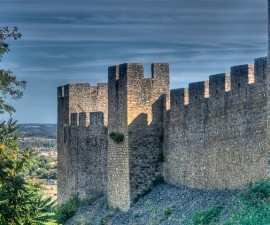If you are staying in or close to Tomar, Portugal, a trip to Golegã to see and ride the famous Lusitano horses makes for an excellent alternative to exploring the historic sites of the city.
The Lusitano Horse Breed dates back to pre-Roman times and is considered to be one of the oldest and rarest breeds in the world. They were long favoured by the military thanks to their strength, stamina, athleticism and even temperament and were favoured by Portuguese Royalty and the Aristocracy as signs of their rich and powerful status. The Lusitano Horse is closely related to Spain’s Andalusian Horse and the two were until recently thought to be the same breed, known as “Iberian”. The modern Lusitano remains a great status symbol and many are trained to perform and compete at the highest levels. Recently they featured extensively in the making of the “Lord of the Rings” trilogy.
The Lusitano Horse Fair, or Feira Nacional do Cavalo, takes place in Golegã every year in November and is an event not to be missed if you are there at the right time. The Fair dates back to the 18th Century when it was known as São Martinho. The modern version holds many events including dressage events, an endurance ride competition, show jumping, junior gymkhana and the Portuguese horsemanship competition – not to mention a bull-run, parades, games, exhibitions, stalls and a whole range of spectator activities.
If you enjoy riding, whatever time of year you visit don’t miss the opportunity to organise a visit to a stud farm or a horse-riding trip at one of the trekking centres in the region. Horse riding is an excellent way to explore the vast plains and rolling green valleys of Portugal’s Ribatejo region. Routes are tailored to the level of each rider and horse, and all offer the highlight of following the path of the Tagus River, whose banks remain largely inaccessible to other means of transport.
For a real equestrian experience, consider staying at one of the riding centres around Tomar. Many of the larger centres offer good quality accommodation and plenty of riding practice, whilst still providing good access to the city’s historic and cultural sites.








